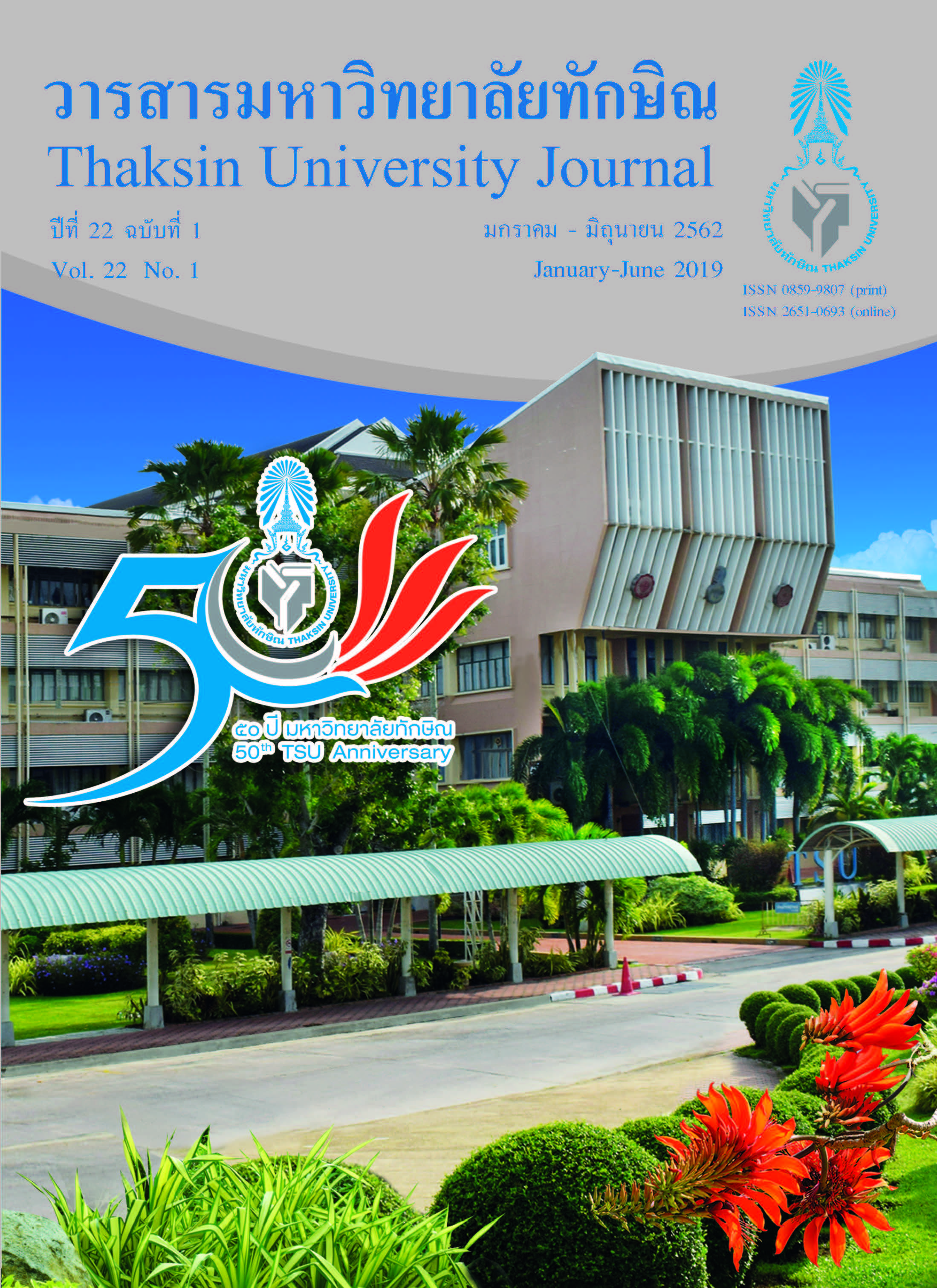Polyhydroxybutyrate and Its Application for Lipase Immobilization
Main Article Content
Abstract
Polyhydroxybutyrate (P(3HB)), is a biodegradable plastic, produced from a variety of microbial
cells. It acts as a source of carbon and energy reserving for microorganisms when bacteria are cultivated in excess carbon sources and lack of some nutrients such as nitrogen and phosphorus. P(3HB) accumulating
bacteria which can produce polyhydroxybutyrate such as Azotobacter sp. Pseudomonas sp. and Alcaligenes
eutrophus are potential strains. Currently, P(3HB) has attracted interest as it can be used as a substitute for
synthetic plastics and its features biodegradable. It is suitable for application in various fields, especially
medical. However, only few research reports had been determined on the application of polyhydroxybutyrate
for enzyme immobilization. Based on literature and the properties of P( 3HB) , it was found that
polyhydroxybutyrate has the ability to immobilize enzymes. Therefore, the basic information of
polyhydroxybutyrate, enzyme immobilization technique, enzyme immobilized with polyhydroxybutyrate and
application of immobilized lipase on polyhydroxybutyrate for biodiesel production are reviewed in this article. In addition, future research related to polyhydroxybutyrate is also indicated.
Article Details

This work is licensed under a Creative Commons Attribution-NonCommercial-NoDerivatives 4.0 International License.
References
Current Opinion Microbiology, 6, 251-260.
[2] Adriano, A.M., Pedro, C. O., Ana, M. V., Roberto, C. G., Raquel, de L., .C. G., & Heizir, F. de C. (2012).
Evaluation of Immobilized Lipases on Poly-Hydroxybutyrate Beads to Catalyze Biodiesel
Synthesis. International Journal of Biological Macromolecules, 50, 503-511.
[3] Kang, Z., Gao, C., Wang, Q., Liu, H., & Qi, Q.(2010).A Novel Strategy for Succinate and Polyhydroxybutyrate
Co-production in Escherichia coli. Bioresource Technology, 101(19), 7675-7678.
[4] Moreira, A. B. R., Perez, V. H., Zanin, G. M., & De Castro, H. F. ( 2007) . Biodiesel Synthesis by
Enzymatic Transesterification of Palm Oil with Ethanol using Lipases from Several Sources
Immobilized on Silica-PVA Composite. Energy and Fuels, 21, 3689-3694.
[5] Salis, A. , Pinna, M., Monduzzi, M., & Solinas, V. ( 2008) . Comparison among Immobilized Lipase on
Macroporous Polypropylene toward Biodiesel Synthesis. Journal of Molecular Catalysis B:
Enzymatic, 54, 19-26.
[ 6] Tacias-Pascacio, V.G., Virgen-Ortiz, J.J., Jimenez-Perez, M., Yates, M., Torrestiana-Sanchez, B., Rosales-
Quintero, A., & Fernandez-Lafuente, R. (2017). Evaluation of Different Lipase Biocatalysts in
the Production of Biodiesel from used Cooking Oil: Critical Role of the Immobilization Support.
Fuel, 200, 1-10.
[7] Silva, N. C. A., Mirada, J. S., Bolina, I. C. A., Hirata, D. B., Castro, H. F., & Mendes, A. A. (2014).
Immobilization of Porcine Pancreatic Lipase on Poly-hydroxybutyrate Particles for the
Production of Ethyl Esters from Macaw Palm Oils and Pineapple Flavor. Biochemical
Engineering Journal, 82, 139-149.
[8] Joana, R., Veronique, P., Jerome, L., Eric, D., & Suzana, F. (2016). Biodiesel Production from Crude
Jatropha Oil Catalyzed by Immobilized Lipase/Acyltransferase from Candida parapsilosis in
Aqueous Medium. Bioresource Technology, 218, 1224-1229.
[9] Babaki, M., Yousefi, M., Habibi, Z., Mohammadi, M., & Brask, J. (2015). Effect of Water, Organic
Solvent and Adsorbent Contents on Production of Biodiesel Fuel from Canola Oil Catalyzed by
Various Lipase Immobilized on Epoxy-Functionalized Silica as Low Cost Biocatalyst. Journal
of Molecular Catalysis B: Enzymatic, 120, 93-99.
[10] Lorena, S., Anders, I., & Lorena, W. (2015). Immobilization of Alcaligenes sp. Lipase as Catalyst for the
Transsterification of Vegetable Oils to Produce Biodiesel. Catalysis Today, 259, 177-182.


